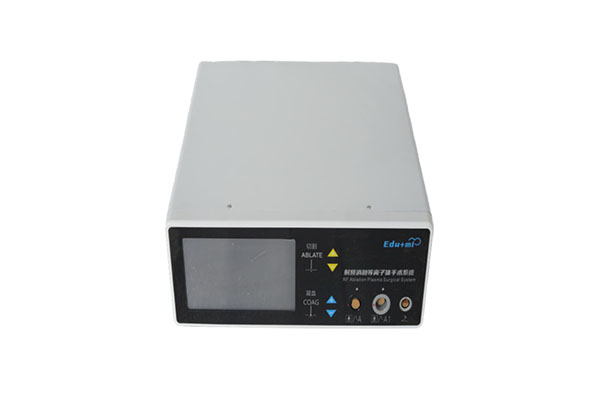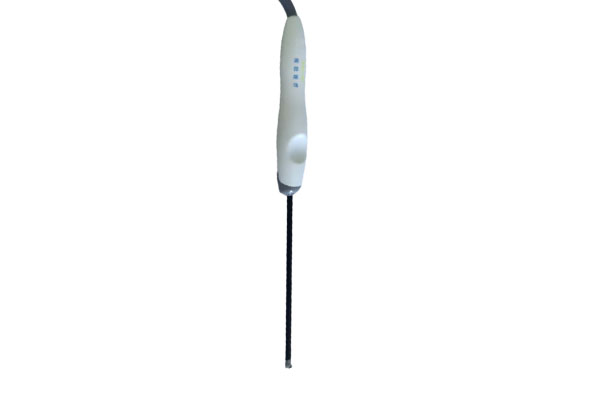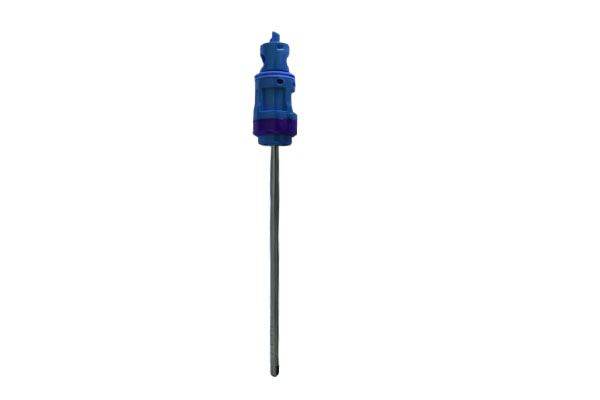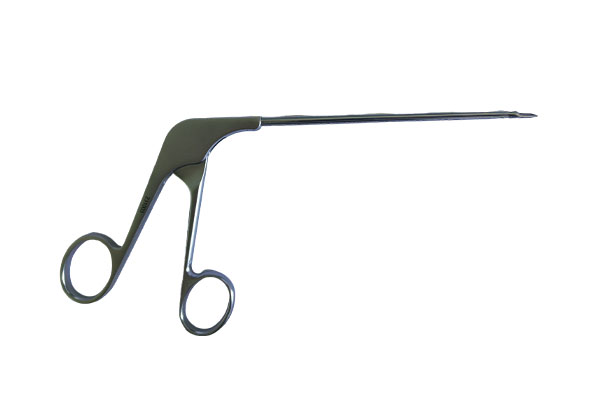How to optimize the heat treatment process of straight blue pliers to improve fatigue resistance?
Release Time : 2025-04-09
In the field of medical surgical instruments, straight blue pliers are basic but crucial tools, and their fatigue resistance directly affects the safety of surgery and the service life of the instrument. Fatigue failure usually results from the accumulation of microcracks caused by repeated opening and closing operations. Especially in precision surgery, the fracture or deformation of the pliers head may cause serious consequences. As a core means to improve the performance of metal materials, the heat treatment process can significantly improve the microstructure of straight pliers by precisely controlling the temperature, time and cooling rate, thereby enhancing its fatigue resistance. However, traditional heat treatment schemes often face problems such as difficulty in balancing hardness and toughness and insufficient residual stress control, and they urgently need systematic optimization.
Material selection is the starting point for heat treatment process optimization. At present, straight blue pliers are mostly made of martensitic stainless steel (such as 420, 440C) or titanium alloy (such as Ti-6Al-4V), and the heat treatment paths of the two are significantly different. Taking 420 stainless steel as an example, its austenitizing temperature needs to be strictly controlled between 980 and 1050°C. Too low a temperature will lead to insufficient dissolution of carbides, while too high a temperature will cause grain coarsening, which will reduce fatigue life. A European equipment manufacturer found through experiments that setting the austenitizing temperature precisely at 1010°C and combining it with salt bath quenching can make the pliers obtain uniform and fine martensite structure, and the number of fatigue cycles can be increased by nearly 40%. For titanium alloy straight pliers, solution aging treatment (such as 950°C solution followed by 500°C aging) can precipitate strengthening phases, but it is necessary to avoid brittleness caused by overheating of the β phase, which places extremely high demands on temperature uniformity.
Control of quenching medium and cooling rate is another key. Although traditional oil quenching can reduce deformation, insufficient cooling rate can easily lead to residual austenite residue, which becomes the origin of fatigue cracks. In recent years, high-pressure gas quenching (such as nitrogen or helium) has emerged in the manufacturing of high-end straight pliers. Its cooling rate is adjustable and pollution-free, which is particularly suitable for thin-walled pliers. A Japanese company uses graded gas quenching technology, using slow cooling above the Ms point (martensite transformation start temperature) to reduce stress, and rapid cooling below the Ms point to ensure complete structural transformation, ultimately increasing the fatigue limit of straight pliers by 25%. In addition, the application of cryogenic treatment (-196℃ liquid nitrogen environment) can further improve material stability by promoting the transformation of residual austenite and refining the distribution of carbides, but the cost is high and economic benefits need to be weighed.
The refined design of the tempering process can effectively release quenching stress and adjust the hardness-toughness balance. Although the conventional tempering temperature range (200~300℃) can maintain a high hardness, insufficient toughness can easily cause brittle fracture. Studies have shown that secondary tempering of 420 stainless steel (first low-temperature tempering to retain hardness, then medium-temperature tempering to improve toughness) can reduce the crack growth rate by 50%. The more cutting-edge pulse tempering technology refines grain boundaries through high-frequency thermal cycles, and has been verified in the aerospace field, but its application in miniaturized components of medical devices still requires process adaptation.
Post-processing technology cannot be ignored either. Shot peening can inhibit the initiation of fatigue cracks by introducing a compressive stress layer on the surface of the pliers. For example, a domestic straight pliers brand uses microparticle shot peening to ensure that the product has no visible cracks after 500,000 opening and closing tests, far exceeding the industry standard. Emerging technologies such as laser shock peening (LSP) can achieve deeper stress optimization, but equipment investment limits its popularity.
In the future, with the maturity of numerical simulation technology, heat treatment processes are expected to achieve "virtual optimization". Finite element analysis can be used to predict the evolution of tissues and stress distribution under different parameters, which can greatly reduce the cost of experimental trial and error. The combination of intelligent temperature control systems and Internet of Things technology may realize real-time dynamic adjustment of the heat treatment process to ensure the performance consistency of each batch of straight pliers. However, no matter how the technology evolves, the core goal remains the same: to find the perfect balance between the hardness of the blade and the toughness of the instrument, which is related to life safety.
Material selection is the starting point for heat treatment process optimization. At present, straight blue pliers are mostly made of martensitic stainless steel (such as 420, 440C) or titanium alloy (such as Ti-6Al-4V), and the heat treatment paths of the two are significantly different. Taking 420 stainless steel as an example, its austenitizing temperature needs to be strictly controlled between 980 and 1050°C. Too low a temperature will lead to insufficient dissolution of carbides, while too high a temperature will cause grain coarsening, which will reduce fatigue life. A European equipment manufacturer found through experiments that setting the austenitizing temperature precisely at 1010°C and combining it with salt bath quenching can make the pliers obtain uniform and fine martensite structure, and the number of fatigue cycles can be increased by nearly 40%. For titanium alloy straight pliers, solution aging treatment (such as 950°C solution followed by 500°C aging) can precipitate strengthening phases, but it is necessary to avoid brittleness caused by overheating of the β phase, which places extremely high demands on temperature uniformity.
Control of quenching medium and cooling rate is another key. Although traditional oil quenching can reduce deformation, insufficient cooling rate can easily lead to residual austenite residue, which becomes the origin of fatigue cracks. In recent years, high-pressure gas quenching (such as nitrogen or helium) has emerged in the manufacturing of high-end straight pliers. Its cooling rate is adjustable and pollution-free, which is particularly suitable for thin-walled pliers. A Japanese company uses graded gas quenching technology, using slow cooling above the Ms point (martensite transformation start temperature) to reduce stress, and rapid cooling below the Ms point to ensure complete structural transformation, ultimately increasing the fatigue limit of straight pliers by 25%. In addition, the application of cryogenic treatment (-196℃ liquid nitrogen environment) can further improve material stability by promoting the transformation of residual austenite and refining the distribution of carbides, but the cost is high and economic benefits need to be weighed.
The refined design of the tempering process can effectively release quenching stress and adjust the hardness-toughness balance. Although the conventional tempering temperature range (200~300℃) can maintain a high hardness, insufficient toughness can easily cause brittle fracture. Studies have shown that secondary tempering of 420 stainless steel (first low-temperature tempering to retain hardness, then medium-temperature tempering to improve toughness) can reduce the crack growth rate by 50%. The more cutting-edge pulse tempering technology refines grain boundaries through high-frequency thermal cycles, and has been verified in the aerospace field, but its application in miniaturized components of medical devices still requires process adaptation.
Post-processing technology cannot be ignored either. Shot peening can inhibit the initiation of fatigue cracks by introducing a compressive stress layer on the surface of the pliers. For example, a domestic straight pliers brand uses microparticle shot peening to ensure that the product has no visible cracks after 500,000 opening and closing tests, far exceeding the industry standard. Emerging technologies such as laser shock peening (LSP) can achieve deeper stress optimization, but equipment investment limits its popularity.
In the future, with the maturity of numerical simulation technology, heat treatment processes are expected to achieve "virtual optimization". Finite element analysis can be used to predict the evolution of tissues and stress distribution under different parameters, which can greatly reduce the cost of experimental trial and error. The combination of intelligent temperature control systems and Internet of Things technology may realize real-time dynamic adjustment of the heat treatment process to ensure the performance consistency of each batch of straight pliers. However, no matter how the technology evolves, the core goal remains the same: to find the perfect balance between the hardness of the blade and the toughness of the instrument, which is related to life safety.







